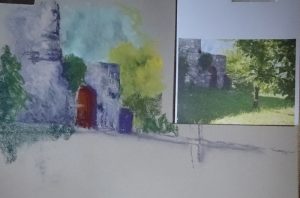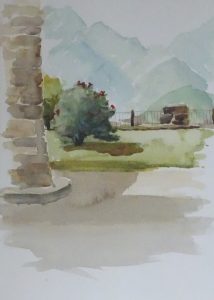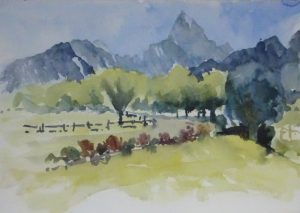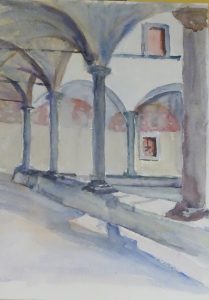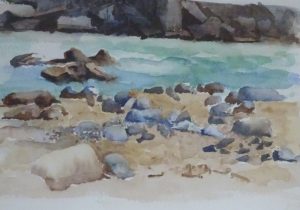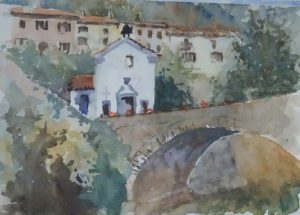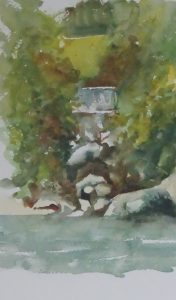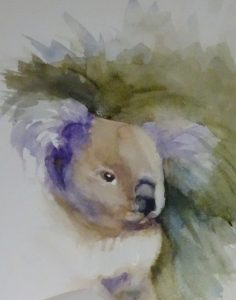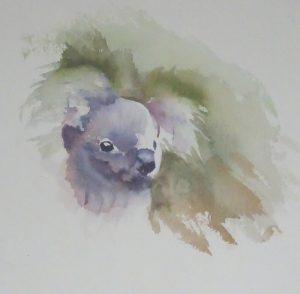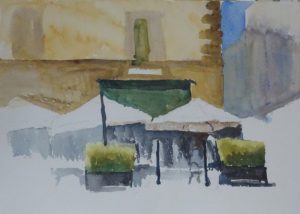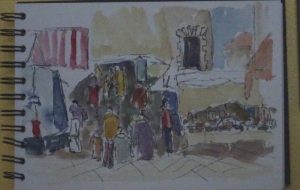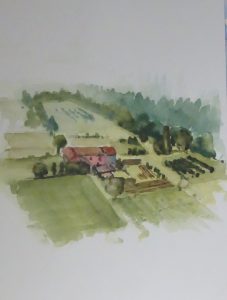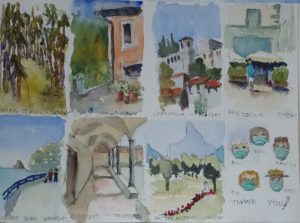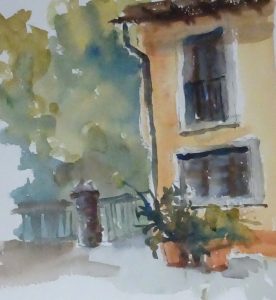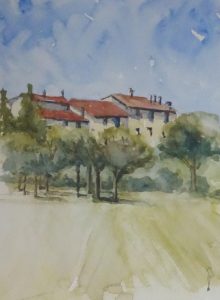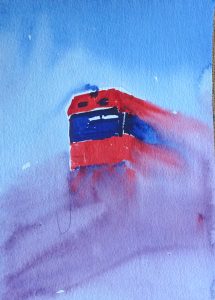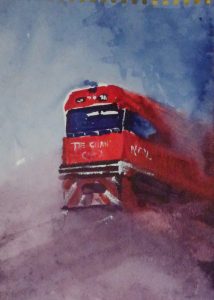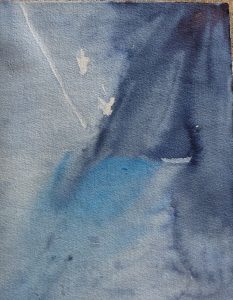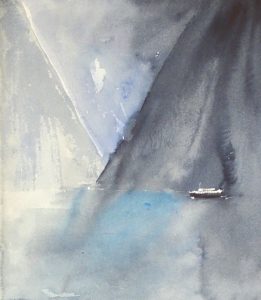It was so good to see all my friends at the Zoom demonstration. I do miss our weekly meetings in Holt – maybe next year?
This week I was working with a vertical board, standing somewhat constrained by the camera at my right elbow.
Now I can stand back and assess the result of this stage in the painting, I can see, as can you, from the juxtaposition of the photo and the painting that the tonal values are in the right place so that the picture can be “read”.
The distant mountain is too close, the colour too bright, too glowing.
I like the purple shadows, though they need to be modified, perhaps towards to blue end of purple, and it needs something warmer still in the lighter areas of the building. I’m not aiming to match the photo, but to recreate the feeling of the place, mid-morning on a very hot day in a very quiet place on one side of a deep valley.
The strength of the building is there already, and the gentle slope of the hill before it takes a nosedive just over the fence is suggesting the charm of the place.

